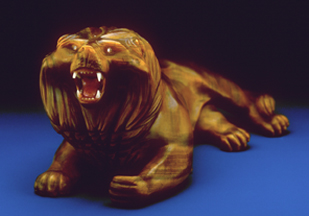
Geotimes Home | AGI Home | Information Services | Geoscience Education | Public Policy | Programs | Publications | Careers

 For more than
a century, mineralogists have accepted that the lustrous bands in the tiger's
eye gemstone occur because of a process called pseudomorphism, where one mineral
replaces another but retains the original shape. However, when Peter Heaney took
a look at the gemstone through an optical microscope, he found that this common
assumption was in dire need of an update.
For more than
a century, mineralogists have accepted that the lustrous bands in the tiger's
eye gemstone occur because of a process called pseudomorphism, where one mineral
replaces another but retains the original shape. However, when Peter Heaney took
a look at the gemstone through an optical microscope, he found that this common
assumption was in dire need of an update.  |
Geotimes Home | AGI Home | Information Services | Geoscience Education | Public Policy | Programs | Publications | Careers |